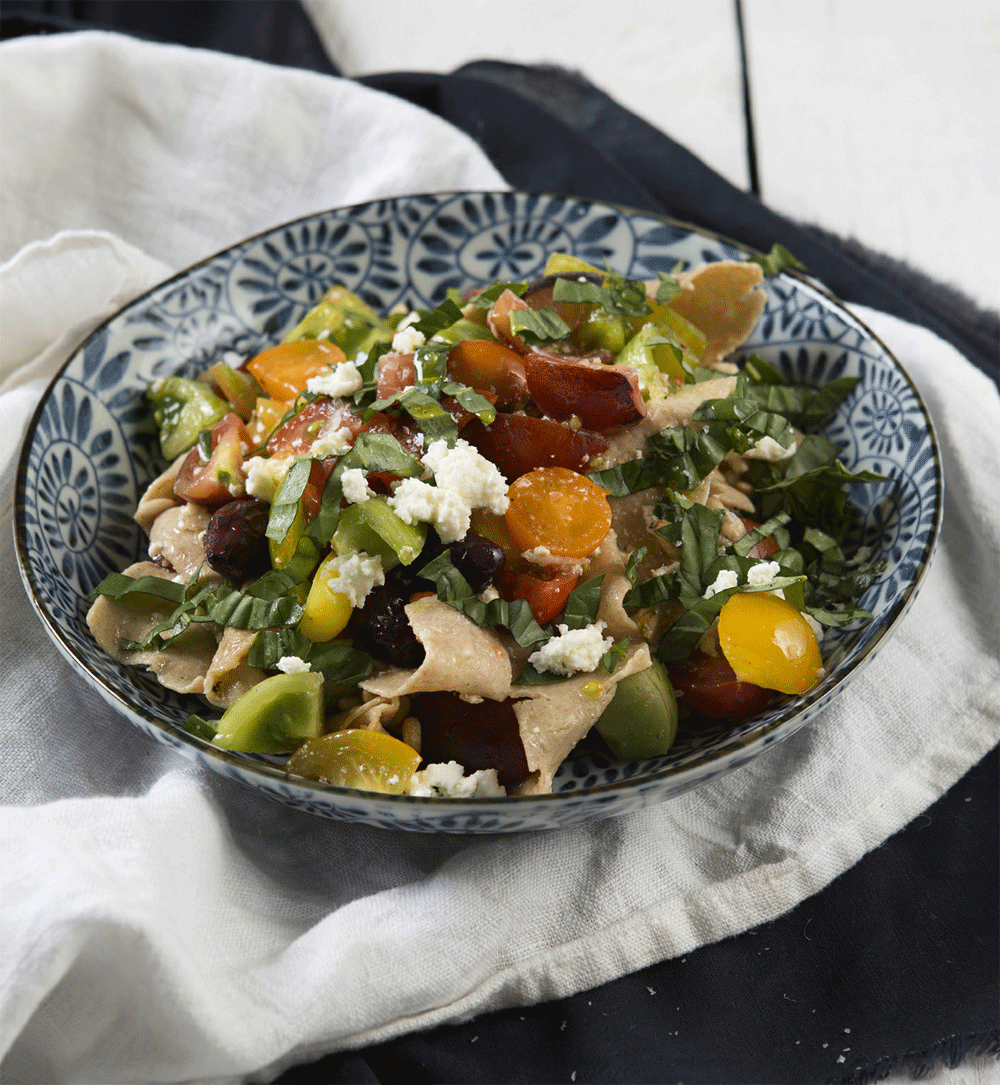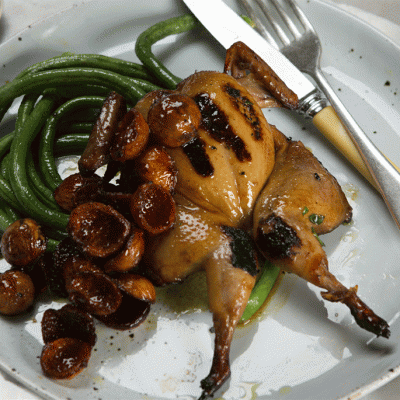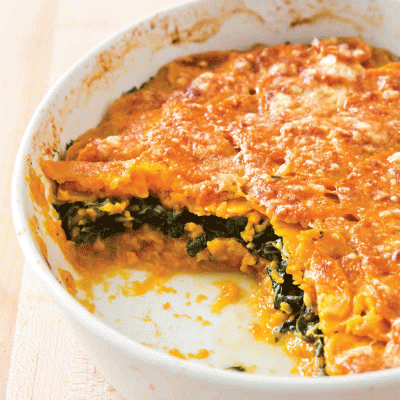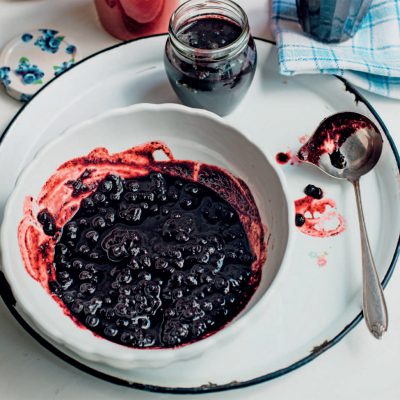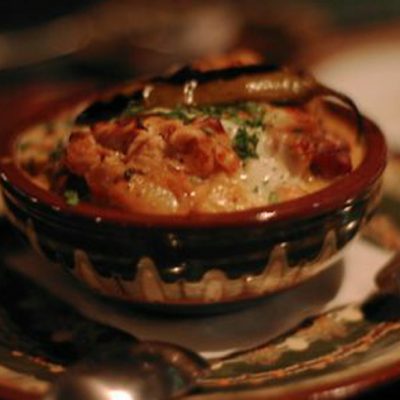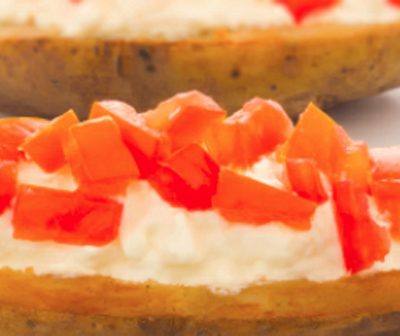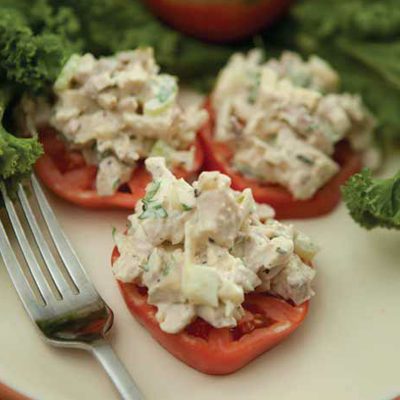Ingredients
-
400 g ripe heritage Tomato
-
Sea Salt
-
freshly ground Black Pepper
-
1/3 cup (80 ml) extra virgin Olive Oil
-
20 Kalamata Olives
-
160 g Ricotta
-
Small handful Basil
-
Spelt Pasta
-
500 g Spelt Flour
-
4 x 55 g free-range Egg
-
6 free-range Egg
Directions
It’s great fun making pasta of any kind, particularly with children who love the involvement as much as they love getting flour all over themselves. Sometimes I will make deliciously silky pasta from hard white wheat flour but for every day I love the rustic texture and flavour of spelt, and making rags is definitely the easiest shape of all as it’s meant to be ‘unstructured’. The only actual cooking in this dish is that of the pasta as all the other ingredients are just cut up and tossed in. There are lots of ways you could make it more special if you feel the need: you could drizzle the olives with a little extra virgin olive oil and roast them in a 200°C (fan-forced) oven for 10 minutes, or you could add your favourite toasted nuts and grated lemon zest. As ever, just use what you love and what you have to hand.
Steps
|
1
Done
|
To make the pasta, tip the flour onto a workbench and make a well in the centre. Whisk the eggs and egg yolks together, then pour into the well and use a fork to gradually incorporate them into the flour. This is a stiff dough but you may need to add an extra yolk if the dough is too dry. Knead for at least 10 minutes or until a smooth shiny dough forms. Alternatively, place the flour and egg mixture in a food processor and pulse just until the dough starts to come together – it won’t need much pulsing. Tip the dough out onto a work surface and knead by hand. Shape into a rectangle, wrap in plastic film, then refrigerate for 30 minutes. |
|
2
Done
|
Cut the rested dough crossways into 10 even pieces and cover with a tea towel. Take a piece of dough and press it as flat as you can with the palm of your hand. Feed it through the rollers of a pasta machine set on the widest aperture. Fold the rolled dough in thirds, then pass the narrow end through the machine another 8–10 times until the pasta is shiny and silky. Pass the dough through each of the remaining settings 3–4 times until you reach the second-last setting. Cut the sheet into irregular shapes, then place on a clean tea towel and cover with plastic film. Repeat with the remaining pieces of dough. |
|
3
Done
|
Twenty minutes before serving, cut the tomatoes in half, then season and toss with a drizzle of olive oil – this creates lovely juices which will add to the dish. |
|
4
Done
|
To cook the pasta, bring 4 litres water to the boil in a tall saucepan, then add a generous amount of salt. Tip in the pasta and stir gently to keep it well separated. Cook until done, testing a piece after 3 minutes. Drain the pasta and reserve a little of the cooking water in case you want to moisten the completed dish. Do not run the cooked pasta under water, as you will lose the precious starch that helps the sauce or oil adhere. |
|
5
Done
|
Return the hot pasta to the pan. Toss through the olive oil, olives, tomatoes and any juices, and season to taste. Divide among bowls and scatter with the ricotta. Gather the basil in a tight wad in your hand and slice with a very sharp knife. Scatter over the pasta and serve immediately. |

